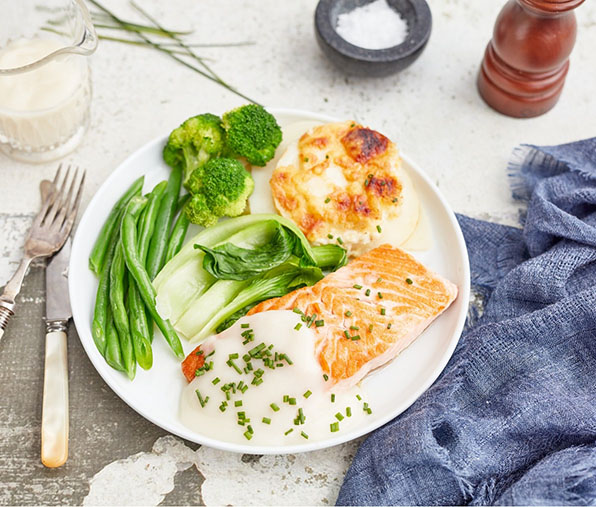
As you age, your digestive system slows down which leads to weight gain over time. This is one of the main reasons fibre becomes more important in older adults. Dietary fibre can keep you full and aids in achieving healthy weight. Additionally, it plays a role in reducing the risk of a multitude of health conditions like cardiovascular disease, stroke, diabetes, and some cancers.
Eating a wide variety of high-fibre foods can help your digestive health by normalising your bowel movement and maintaining your bowel health. This is especially true for people living with irritable bowel syndrome (IBS), a gastrointestinal condition marked by stomach cramps, diarrhea, and constipation. However, whilst fibre is known to relieve some of the problems caused by IBS, it is important to remember that fibre tolerance is not the same for everybody. Both soluble and insoluble fibre have their own benefits, but their effects vary from person to person. Hence, it is still best to see a doctor for treatment advice if you have IBS. You might also consider talking to a registered dietitian nutritionist to have your overall diet assessed and determine what changes need to be made as far as your fibre intake is concerned.
But if you’re simply looking to increase your fibre intake for the purpose of boosting your immune system and overall health, filling up on whole grains, vegetables, and fruit can help you get the amount of fibre that your body needs per day.
When it comes to adding fibre to your diet, it’s best to start low, go slow. “Too much fibre” is a real thing and can occur if you increase your fibre intake very quickly. Eating too much fibre can lead to symptoms such as bloating, gas, abdominal pain, and constipation. With that being said, here are some tips on increasing your fibre intake:
- Eat whole fruits such as pears and apples instead of drinking fruit juices
- Replace white rice, bread, and pasta with brown rice and whole-grain products
- Snack on fresh and dried fruit, raw vegetables, and whole-grain crackers instead of pretzels and chips
- Have a daily serving of beans and lentils
- Try grinding and sprinkling chia seeds on your smoothie or oatmeal
- Drink plenty of water when eating high-fibre foods
Finding a meal with enough fibre can be challenging at times, but Gourmet Meals is here to help you make the switch to a high-fibre diet. We offer a huge range of high-fibre meals that are actually delicious, too! Try our ‘Beef Rissoles’ in a rich tomato sauce, served with green beans, carrots, corn, and potato bake; or our ‘Lamb Roast’ with mint gravy, mixed vegetables, pumpkin, and roasted chats potatoes. A Pavlova served with mango, strawberries, kiwifruit and cream, you are in for a sweet treat with our own version of ‘Fruit Pavlova’.
Boost your fibre intake now and start reaping its health benefits. Browse through our menu or contact us on 1300 112 112 for more information.
Tags: High Fibre Diet, Fibre, High Fibre Foods, Digestive Health, Increase Fibre, How To Increase Fibre, Gluten-free Meals Delivered, Frozen Meals Delivered, High Fibre Meals Delivered






